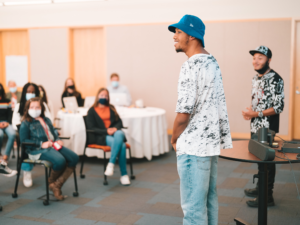No Teachers, Students Choose their Schooling
During a given day, some students at this school in Florida head over to the reading corner, some of them work on writing and drawing, and others tap into the computers to perfect their word processing and software-related skills. But, where are the teachers? They are there, but their job is not to force education down the throats of the students. Some experts even say that the traditional process of schooling is what creates some of the apathy that critics of this process say makes this idea unworkable.
Founders and staffers here don’t quite agree.
“In traditional schools there are so many students that kids are not allowed to talk to each other during their school day,” said staffer Idelma Quintana, whose son attends the school. “Our kids here are learning how to get along with other kids and negotiate conflict.”
As public schools adopt tougher standards and emphasize standardized tests, alternative schools have become more popular.
“The regular public school system and even some private schools tend to operate under the paradigm that kids are lazy and need to be forced to learn,” said Jerry Mintz, director of the New York-based Alternative Education Resource Organization. “We take a diametrically different approach that starts with the assumption that kids are natural learners.”
Mintz said in the past two decades, the number of home-schoolers nationwide has grown from about 20,000 to about 2 million. He said there are about 12,000 alternative schools, including charter and public alternatives and Montessoris.
Of those, about 200 are “democratic schools,” in which students play a big role in decision-making, he said.
This school does not try to force feed schooling to its students. Instead it takes the approach that kids are able to initiate their own learning, and work with other classmates to resolve conflict and create the school year’s objectives.
Students don’t take any standardized tests — not even FCATs — and they don’t get a traditional high school diploma. Despite this, Dionne Ekendiz, one of the Davie school founders, said about 80 percent of Sudbury graduates are accepted into their first choice of college, proving the students are learning.
To get into a college, students can opt to take the entrance exams. But founders say essays and interviews with admissions counselors set their students apart.
Joshua Joseph, 9, recently learned how to make pop-up books. He said he likes that he can spend as much time as he wants playing computer games.
While some may question how the format works with reading and math, “the truth is, that’s the easy stuff,” Ekendiz said. “Our children will need skills like self-understanding, self-motivation and creative problem-solving.”
Sunset Sudbury, on 66th Avenue near Stirling Road, opened in August after about three years of planning. Its founders are parents turned off by traditional public schools.
The school, which hopes to serve K-12, doesn’t group students by age range, unlike some Montessoris. Here, kids arrive anytime between 8 a.m. and 11 a.m. The school stays open until 3:30 p.m., but parents can take students out during the day.
Related articles
- Deciphering Digital Text (rsu2teachertech.wordpress.com)
- The Land of Studenthood (theprincipalandinterest.wordpress.com)
- Supporting Student Voice and Choice Leads to Equity (edreformer.com)
- Ten Tools for Innovative Educators (edreformer.com)








0 Comments
Leave a Comment
Your email address will not be published. All fields are required.